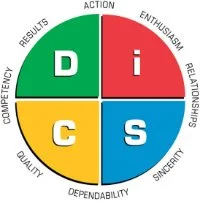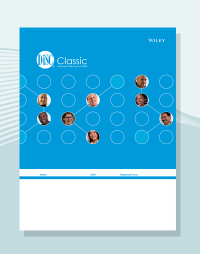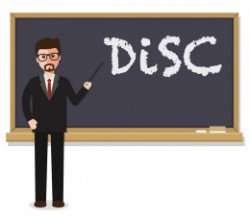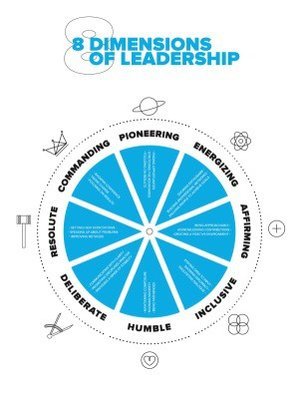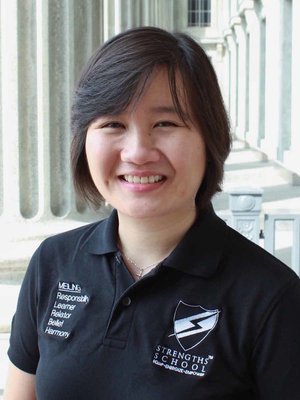DiSC vs. StrengthsFinder [A Comprehensive Guide]
Introduction
To date, over 50 million people worldwide have taken some form of the DiSC assessment.
In contrast, only 16 million have taken the Clifton StrengthsFinder 2.0 profiling test.
What’s the difference between the two tools, especially for personal or professional development?
Here’s a full comparison.
Table of Contents
- How were the DiSC and CliftonStrengths assessments developed?
- How are the two tests administered?
- What were the primary purposes of the two models?
- How accurate are the two tests?
- Is it possible to map my DiSC profile to my StrengthsFinder themes?
- DiSC vs StrengthsFinder for Growing Self-Awareness
- DiSC vs StrengthsFinder for Building Relationships
- DiSC vs StrengthsFinder for Productivity
- DiSC vs StrengthsFinder for Developing Leadership Capacities
- DiSC vs StrengthsFinder for Hiring and Recruitment
1. How were the DiSC and CliftonStrengths assessments developed?
The DiSC assessment began as a simple theoretical model to explain behavioral differences amongst groups of people.
Initially proposed by Dr. William Moulton Marston in his 1928 book, Emotions of Normal People, the theoretical model was developed into an assessment tool by Walter V. Clarke almost 30 years later.
Since then, there have been multiple revisions of Clarke’s original assessment.
The current assessment tool is called the DiSC® Classic 2.0 and is produced by John Wiley & Sons, Inc, although there are several third-party versions of the DiSC assessment.
The Clifton StrengthsFinder profiling tool was designed based on a 30-year study of the innate talents found amongst humanity.
Through two million semi-structured interviews, Donald O. Clifton and his team of scientists studied the underlying elements that brought individuals success in a wide variety of arenas – banking, medicine, law, education, nursing, and so on. From there, the many underlying talents were sorted into 34 overarching themes – now known as CliftonStrengths themes.
The initial assessment to identify an individual’s top talent themes was developed in 1998. In 2007, building on the original assessment and language, Gallup released a new edition of the CliftonStrengths assessment and dubbed it StrengthsFinder 2.0.
2. How are the two tests administered?
Both the DiSC and CliftonStrengths assessments are self-reported measurements.
Simply put, the user reads a series of words/statements and then selects what best describes him or her.
Both tests are completed online, although there are paper versions of the DiSC assessment available from third-party organizations.
There are also simplified versions of both assessments for younger users who may not have the life experience or vocabulary to complete the tests: the Clifton Youth StrengthsExplorer is the shorter, simpler version of the CliftonStrengths assessment (and has only 10 themes compared to 34), while the DiSC assessment has many child-friendly versions from various third-party organizations.
3. What were the primary purposes of the two models?
The DiSC assessment measures an individual’s priorities, which then translate into behavioral tendencies.
Its main purpose is as a descriptive and prescriptive tool to help a person better understand oneself, others, and the various behaviors that come up in interpersonal situations.
In contrast, the CliftonStrengths profiling tool measures the presence of raw talents that can be productively applied to achieve success.
StrengthsFinder's main purpose is as a developmental tool to help individuals understand the innate talents within them that could help them fulfill their desired goals, whether personal, interpersonal, or work-related.
4. How accurate are the two tests?
Short answer: To use statistical terms, the reliability and validity of both assessments are high.
A high reliability score means that if you take the tests a second time, you’ll get a similar set of results as the first time.
A high validity score means that tests measure what they say they measure (DiSC measures priorities, while CliftonStrengths measures the presence of innate talents).
One caveat is that the DiSC assessment is contextualized. This means that when taking the DiSC assessment, you have to think of a specific context (e.g. how you behave at work, or perhaps with your family), and the results are valid only within that context.
It’s possible for an individual to be an SC personality (Steadiness Conscientiousness) with his or her friends, but a CD personality (Conscientiousness Dominance) at work, because the individual is required to be more assertive at work but values the relational connection more with his or her friends.
In contrast, your CliftonStrengths results are valid regardless of the context. Since the assessment measures your underlying motivations and intrinsic wiring, these desires remain constant 24/7.
For example, if an individual possesses the Achiever talent theme at work, he or she is also likely to have the same underlying drive and desire to accomplish things at home.
That said, because both tests are self-reported measurements, they do require a certain degree of honesty to be accurate. If, let’s say, I decide to take the DiSC assessment and answer the complete opposite of what I actually believe, then the results won’t be an accurate reflection of my profile. However, barring such exceptional cases, both assessments are widely regarded by many as valid and reliable.
5. Is it possible to map my DiSC profile to my StrengthsFinder themes?
Short answer: no.
The two profiling tools were built on two very different philosophical approaches, and each tool measures a different set of dimensions.
To attempt to map the dimensions of one profiling tool to the other would be like comparing a ruler to a thermometer: the two tools were intended for different purposes.
To give a broad overview, the DiSC offers insight into the priorities of an individual, while the CliftonStrengths tool measures the presence of raw talents that can be developed into strengths in order to achieve the user’s desired goals. We’ll go into more details in the sections below.
6. DiSC vs StrengthsFinder for Growing Self-Awareness
Both the DiSC and CliftonStrengths profiling tools are useful for building self-awareness.
The DiSC model assesses individuals on four key dimensions: Dominance (D), Influence (i), Steadiness (S), and Conscientiousness or Correctness (C). These four dimensions provide insight into the priorities of the individual.
For example, if you score high on Steadiness, your main priority is the connection. You value people’s needs and feelings, are sensitive to any tensions within the relationship, and you’re usually the one lending a helping hand whenever someone’s in need.
If you are high on Conscientiousness, your main priority is an attention to detail. You value a high degree of quality and precision of thought in your work, and you’re likely to be careful and diplomatic in relating to others.
But just as the DiSC helps you understand your priorities, it also clues you in to possible blind spots. For example, someone high on Conscientiousness is likely to be reserved, thoughtful, and prefers processing internally rather than verbally. Someone high on Influencing, in contrast, is likely to be more socially adventurous, vocal, and probably prefers to process things out loud. The Influencing personality might judge the Conscientious personality as unapproachable and a poor communicator, and the Conscientious personality might judge the Influencing personality as superficial and flaky.
The CliftonStrengths profiling tool assesses individuals on the natural patterns of thought, feeling, and behavior that can be productively applied. These natural patterns are like a roadmap to identifying what you’re intrinsically motivated by, allowing you to tap on these core motivators for greater productivity, higher levels of fulfillment, stronger relationships across the board, and better quality of life. Your top talent themes also determine what your greatest value-add is likely to be, whether at work, at home, or with your friends.
Your CliftonStrengths profile also helps you become more aware of how your strengths might be overplayed (and, correspondingly, helps you to manage it). As the saying goes, your greatest strengths are also your greatest weaknesses.
For example, if you have the Activator talent theme, you’re likely to be gifted at turning thought into action: you want movement, and you want it fast. But the overextension of this need for speed might be that you’re sometimes rash, careless, prone to speaking without thinking, and impatient with a seeming lack of movement. (If you’d like more information about how each theme might be overplayed, check out our Growing Talent to Strength series on the blog.)
All that said, in my experience with both tools, I find that StrengthsFinder provides a more nuanced definition of the way we’re intrinsically wired.
The DiSC, while an excellent indicator of the priorities and behavioral tendencies of the four dimensions it measures, is limited in what it reveals to the user.
For instance, I could be a DC personality (Dominance Conscientiousness) and share certain traits with another DC personality, yet by and large we can have very different approaches, motivations, and preferences from each other. These differences can cause quite a number of clashes when we work together – and the DiSC profiling tool doesn’t help much in deciphering why. Simply put, because it only measures four main dimensions, the DiSC has a limit to the subtle distinctions it can bring out from individual to individual.
This is where the 34 themes of the StrengthsFinder profiling tool are stronger in helping the user build self-awareness, in my opinion. The unique combination of the individual’s top talent themes gives a fuller picture of the underlying motivations and needs driving the behaviors.
For example, a DC personality with the Strategic theme will approach the situation much differently compared to another DC personality with the Responsibility theme, because the Strategic theme needs options and flexibility in hitting the objectives (and will often take shortcuts), whereas the Responsibility theme needs to make sure all the essential requirements are met. This explains why the two DC personalities might clash at work: even though their DiSC behavioral tendencies might be the same, the way they perceive the situation and what’s important is vastly different.
Even if your DiSC themes are the same, if your StrengthsFinder themes are different, you'll have vastly different perspectives...
7. DiSC vs StrengthsFinder for Building Relationships
Before I get into this, let me just say that with any profiling tool, there's a pitfall that every coach/user of the tool must watch out for: the tools are always meant to empower, not to label or pigeonhole. With both DiSC and StrengthsFinder, there are certain CliftonStrengths themes or DiSC traits that are often perceived as negative, and subsequently the profiling results are used in a way that is not at all their intended purpose.
However, this is a misuse of the tool, and not so much the fault of the tools themselves. To discard the insights from the two assessments because of people who have misused the tools would be akin to discarding all the knives or sharp objects because of people who have misused these.
All that said, I believe both StrengthsFinder and DiSC are excellent tools for those looking to build stronger relationships, either at work or with their loved ones. In fact, I find that having the knowledge of both profiles helps to give a fuller picture of the relational dynamics at play – particularly if it’s a close working/personal relationship, such as a business partner or a spouse.
One of the objections I frequently hear regarding StrengthsFinder is that it’s far more complicated than the DiSC as a tool to help an individual understand others. While this has a degree of merit (StrengthsFinder has 34 themes to DiSC’s 4 dimensions, after all), I would also argue that StrengthsFinder is far more robust.
DiSC is a prescriptive as well as a descriptive tool. This means that based on your DiSC profile, even people who don’t know you very well can assume certain things about your personality and preferences, and that there are a few areas of improvement for anyone with the same DiSC profile as you. While this can be useful for those looking for quick, solid handles for personal development, at some point, this will lead to a glass ceiling – it simply does not adequately capture your innate wiring well enough to provide handles for growth.
In contrast, StrengthsFinder is a developmental tool that is neither prescriptive nor descriptive in nature. Rather, the combination of your unique talent themes points to your intrinsic motivations, needs, thought patterns, and decision-making processes. While more complicated initially, once you have a greater awareness of this innate wiring, you can begin to communicate and build on this foundation to develop stronger and more fulfilling relationships with your colleagues, managers, and loved ones. (In fact, I wrote an article on how I used StrengthsFinder with my family. Check it out here.)
8. DiSC vs StrengthsFinder for Productivity
The DiSC model facilitates greater team productivity, primarily by helping people understand the way their team members work and think.
For example, if I am a high I personality working with a high C personality, I understand that my working style is likely to be quite the opposite of the high C's, which may result in misunderstandings and conflicts at work if we do not learn to communicate well with each other. While I tend to process my ideas externally to bounce ideas off people, my high C colleague would rather process them internally and come to well-reasoned and well-researched conclusions before verbalizing them. Understanding this about my team member will help to reduce friction between us, which will in turn increase collaboration and team productivity.
This is also true in a school context. For instance, a student with a high I personality may not naturally be great at details in his or her projects, but may be excellent when it comes to presenting the work in front of the class or rallying people to a common objective. The high C personality, in contrast, may not enjoy presenting in front of the class or rallying everyone together, but may love digging deep into the subject matter and making sure the content is solid. Understanding this, each student can play to their strengths in the team.
The use of StrengthsFinder can boost team productivity as well.
For example, at Strengths School, I frequently partner with Jason Ho in brainstorming for our marketing communications. Because of his Ideation, he can easily think of a dozen new marketable ideas in 30 minutes -- which would've taken me hours to come up with if I had done it on my own.
From there, my Learner, Analytical, and Intellection strengths will continue to flesh out the ideas, giving the concepts more substance and researching the data to back up the approaches.
However, in my opinion, when it comes to personal productivity, StrengthsFinder is the superior tool.
While understanding your DiSC profile could help reduce friction and increase collaboration, thereby increasing team productivity, understanding this same profile does very little for increasing your personal productivity.
Not so for StrengthsFinder.
For example, if I'm a student with Adaptability in my top 5 themes, I understand that Adaptability is most energized by change. This means that if I am stuck in the same environment and forced to study for 8 hours at a stretch, I am unlikely to be very productive.
Now that I know this, I can tap on the innate wiring of my Adaptability strength to be more productive. Instead of studying alone with my books in the same environment, I can study with a friend, and we can quiz each other on the main concepts to be learned. This interactive exchange would excite my Adaptability, and help me to digest the concepts much more easily than if I had simply hit the books for 8 hours.
9. DiSC vs StrengthsFinder for Developing Leadership Capacities
Before I go into this, let me just address a common misconception: there is no “best profile” for leaders. Leaders come in all forms!
We often get this question from leaders that we coach, particularly if the leader or manager is filling a role vacated by a predecessor. The underlying question is, “do I need to change myself and be more like ____ to be a good leader?”
Fret not: you don’t have to try to be someone you’re not in order to be a good leader.
But in order to be an effective one, you have to know your unique leadership style in order to be able to leverage on it in managing your team.
This is where both DiSC and StrengthsFinder would help in building a greater self-awareness for leaders. Both tools would help you identify your greatest value-add to the team, what you need to perform at your best, and the over-extensions of your natural leadership style.
With DiSC, you get a comprehensive leadership-specific report that provides intuitive, actionable components for you to grow your leadership style. There are also management and team-building versions of the test (at an additional cost) to help leaders understand their team members better and how to motivate, manage, and communicate with them more effectively.
Similarly, Gallup has produced a book on Strengths-Based Leadership, compiling their research based on in-depth interviews with over 20,000 leaders as well as over 10,000 followers around the world to discover why people followed the most important leaders in their lives. The book provides action points for leaders to aim each of their CliftonStrengths talent themes to better engage, motivate, and inspire their team members.
“Leadership is not just about understanding what you’re good at and investing into these things; it is also about managing the weaknesses that you have.”
All that said, leadership is not just about understanding what you’re good at and investing your time, energy, and resources into these things; it is also about managing the weaknesses that you have. There are certain weaknesses that, if left unaddressed, will derail leaders in effectively managing their teams and reaching their desired goals.
The DiSC model’s approach to managing these weaknesses is for leaders to dial down on their natural styles, managing these tendencies for the greater good of the team. For example, someone with high ‘D’ (Dominance) should tone down on their natural bluntness in certain situations and be more sensitive to how their team members feel.
In essence, to grow themselves, leaders must adopt the characteristics they do not have.
But this is like stretching a thick elastic band: eventually, the tension grows to be too much and the elastic band has to snap back to its original state. While self-awareness does help greatly in toning down the overextensions of your natural tendencies, staying in this mode for a prolonged period of time can be rather exhausting for the individual.
Alternatively, leaders can partner someone with a complementary DiSC profile in leading their teams. For example, someone with an ID profile (Influencing Dominance) who lacks attention to detail can partner with a C profile (Conscientiousness) to help him or her ensure that all the details are in order and the required systems and structures are in place.
In the Strengths-based approach, leaders can tackle this problem by using one or more of their other strengths to mitigate the overextensions of their strengths. For example, I once coached a school leader who had Ideation in his top 5. He loved coming up with novel ways of teaching the students as well as managing his department, but his new ideas sometimes disrupted the flow of the team, causing upheaval unnecessarily. Fortunately, he also had Analytical in his top 5, so he decided to lean more into his Analytical theme to find solid grounding for his ideas as well as analyze the possible consequences of implementing these new ways of doing things. This helped the team take to his ideas more easily.
And similar to the DiSC model, StrengthsFinder also encourages individuals to find complementary partnerships in leading their teams. Leaders need not be well-rounded, but teams should be.
For example, someone with the Analytical theme who places a high value on logic and data can partner someone with the Empathy theme, who is talented in being able to sense the emotions and morale of the team. Such a partnership would sharpen both of their decision-making models, allowing them to take into account both ends of the spectrum (logic vs emotions).
10. DiSC vs StrengthsFinder for Hiring and Recruitment
Both the DiSC and StrengthsFinder profiling tools are useful in the recruitment process in that they help recruiting managers get a sense of what the candidates may be like.
However, the caveat is that neither tool is meant for pre-interview screening or selection as they do not take into account prior experience, specific skillsets, or alignment with the organization’s vision. Instead, the results obtained from both tools simply provide a basis for conversation and further exploration.
As the Clifton StrengthsFinder 2.0 Technical Report notes, “The [Clifton StrengthsFinder] is not designed or validated for use in employee selection.”
Similarly, the official DiSC website also notes that the “DiSC is not recommended for pre-employment screening because it does not measure a specific skill, aptitude, or factor specific to any position. Personality assessments should only be one of the many factors considered in the employment decision.”
That said, while I would not recommend either tool for recruitment screening purposes, I believe StrengthsFinder is a powerful tool for job placement purposes. For example, Facebook is well-known for hiring the smartest people they know (independent of specific job openings), and then creating a job for them based on their CliftonStrengths profiles. This helps to ensure that their employees are in roles that enable them to do what they do best every day, leveraging on their innate talents to pursue the best outcomes for the company.
What do you think?
Have you taken either of the two profiling tests before? What’s been your experience with them?
Written by Tan Meiling
Responsibility • Learner • Relator • Belief • Harmony
As a Gallup-Certified StrengthsFinder coach, Meiling is passionate about helping people discover their innate potential and celebrating who they are. To that end, she enjoys writing articles and regularly posts on her blog, MeilingTan.com. Meiling is also actively giving StrengthsFinder coaching to individuals and facilitating workshops in Singapore.
